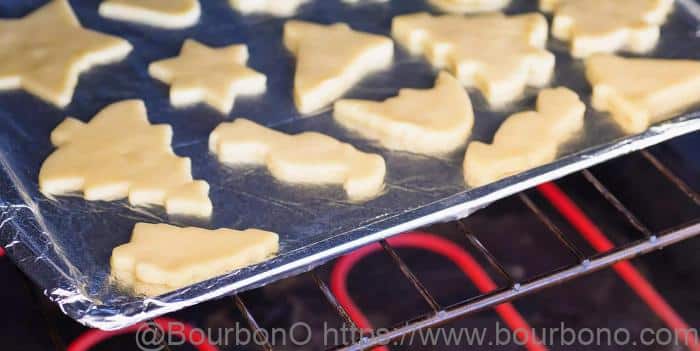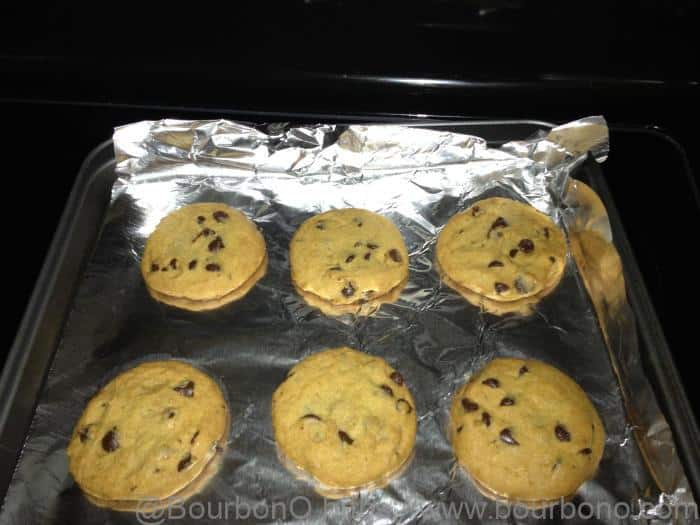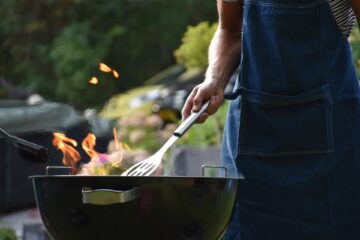Can you bake cookies on foil is something you might ask when trying to make an exquisite batch of cookies. There are many ways to make use of aluminum foil for cooking purposes. From lining your grill before roasting veggies to covering leftover lasagna. There’s no denial that foil is an essential kitchen staple. However, is it suitable to line your baking tray with aluminum foil before baking cookies or doughy, sweet treats? Let’s dive into this post so you can make the right decision!
What is cooking foil made of
As you may already know the foil usually used for cooking is almost exclusively composed of metal aluminum. This material is a great heat conductor, and therefore it proves to be useful in many cooking recipes. For example, Reynolds Wrap Aluminum Foil contains up to 98.5% aluminum. While some people may call it “tin foil”, cooking foil these days isn’t made of any tin. Unlike the old times when they actually used tin to make this product.
Aluminum foil is heat-safe and suitable for many cooking applications, including oven recipes. However, its conductive properties have some serious downside effects when it comes to baking. No matter if you’re making gingersnaps, chocolate chip cookies or any other doughy treat.

Related post: How to strain without a strainer? The most useful items in the kitchen for you
Can you bake cookies on foil?
The downsides of baking cookies on foil
Technically, it’s possible to bake cookies using aluminum foil. However, it’s recommended not to because this way your cookies will burn more easily. There’s a scientific reason that explains why one should never use a foil-lined baking tray to bake cookies. When come in direct contact with aluminum foil, the bottom parts of your cookies will be exposed to higher and more concentrated heat than the tops. This is due to the foil’s natural conductor characteristic.
The end result is that the cookies will bake unevenly. And the bottoms of the cookies will bake much quicker than the rest of the cookies. When baked on a foil-line baking tray, your cookies will have crispier and browner bottoms than the ones baked using a parchment sheet. Even if you grease the foil or lower the temperature, it’ll still be easy to ruin your batch when baking with foil.

The good thing about baking cookies on foil
Foil in the process of baking cookies in the oven or on the griddle is also very effective. Its advantage is that it can withstand high temperatures, protect food from overheating, scorching… For example, the crust will not burn or the chicken skin will not be black. Wrap the outside with foil when baking, the food will cook slowly and thoroughly without burning.
Foil is used when processing many different foods such as baking cookies, crusty cakes. After mixing, the cookie dough is divided evenly and placed on a baking tray lined with foil. Remember to spray a layer of non-stick water on the foil before placing the cake. When finished baking, the cookies will expand and become more crispy because the heat transferred to the foil continues to act directly on the cake and make the base crispy.
If you have perfect control over the temperature and the baking time, baking on foil will give you a batch of cookies that have a nicely browned bottom and fit right in between soft and crisp.
Related article: Can you put parchment paper in the oven – Tips for parchment sheet
Useful tips when baking with foil
- If you choose this method, remember to lower the temperature by 5°F and lightly grease the foil. Also reduce your baking time by 5% to 10%.
- Always choose the heaviest kind of aluminum foil, as the flimsy foil will tear easily.
- Wrap the oven rack with foil, grease lightly and you’re ready to bake some cookies. Remember to check your batch after 7 minutes and reduce the baking time.
- Baking on foil is not well-suited for delicate cookies, such as sugar cookies or shortbread. Also, try not to bake cookies that contain high amounts of acid on cooking foil. Aluminum may leach into your cookies as it can react with acidic foods such as cherries or lemon.
- Baking bar cookies (such as Oatmeal Shortbread Bars or Ginger Molasses Bars) is most ideal using foil. However you should grease the baking pan and lightly flour before baking.
- Line your baking tray with foil for a perfect batch of meringue cookies.
- If you run out of cookie sheets, forming aluminum foil into a baking tray is also a good idea. You can also make custom molds for your cookies out of aluminum foil.

What should you use instead or aluminum foil for baking
The risk of burning your cookies is high when baking on foil. That’s why parchment paper (or baking paper) is still considered a more reasonable choice. Parchment is heat resistant and it helps to distribute the heat in the oven more evenly. Baking paper also prevents the metal baking pan with highly-concentrated heat from burning the bottom parts of the cookies.
Moreover, greasing the parchment paper is not necessary. It already has a non-stick silicone coating, which means your baked goods won’t stick to its surface. In fact, you can make your cookies slide off the baking paper onto the cooling rack effortlessly.
In conclusion, the answer to “Can you bake cookies on foil” is entirely up to you. Some people say that they prefer baking cookies on foil and it turns out pretty fine. In case you don’t have much experience in baking, it’s best to avoid using foil. However, if you really want to test your baking skills, then go ahead to try it and let Bourbon O know your results!




